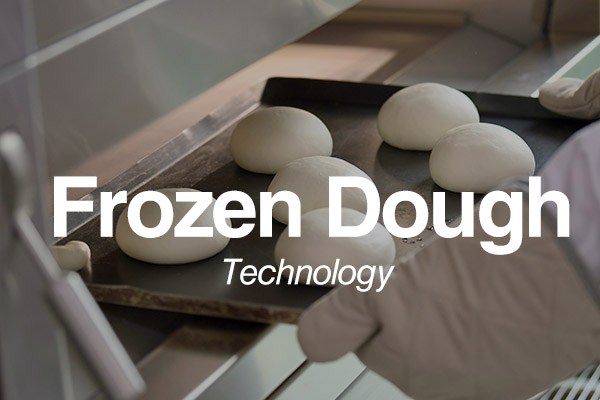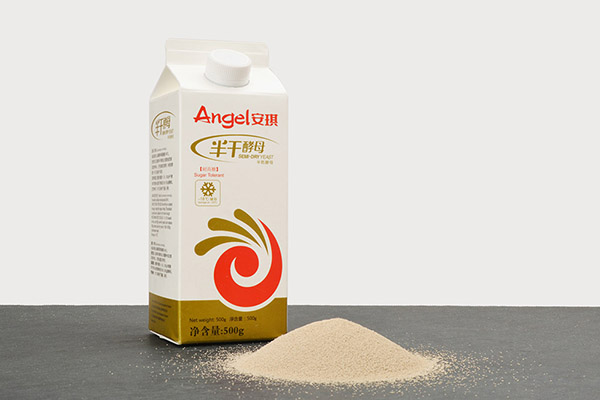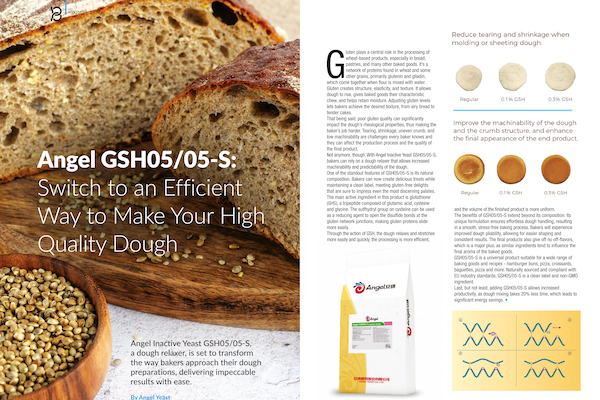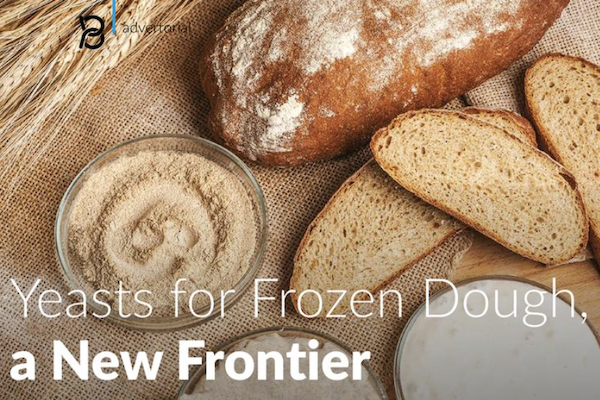-
Home > News & Events > Blog > Yeast & Baking

1. What is frozen dough
Frozen dough technology is to quickly freeze the semi-finished products obtained during making bread, and then store them in -18℃. This can effectively extend the shelf life of bread and facilitate the transportation and management of semi-finished products. When wanting a bread, the semi-finished product of frozen dough can be unfrozen, fermented, and baked to obtain a fresh bread.
2. Advantages of frozen dough
Mainly reflected in the following aspects:
Save labor costs. The frozen dough can be produced and managed in a centralized way, improving production efficiency. In the later stage, the frozen dough only needs to be fermented and baked, reducing labor costs.
Reduce cost of bread production equipment. The shops can unfreeze, ferment and bake on demand, reducing equipment investment and rent.
Reduce losses. It can be produced at any time in line with customer needs, which will reduce the waste of raw materials, and manage the inventory more effectively.
The frozen dough meets the requirements of modern customers to baked products, in brief, freshly baked, professional, delicious, fast and convenient.
3. Development trend of frozen dough
Affected by the pandemic, instant foods and quick-frozen foods have seen a rapid growth in the Chinese market. In 2020, quick-frozen foods in the Chinese market have increased by more than 30% compared to 2019. Accordingly, frozen dough will have a good development prospect in the future.
4. Good news for frozen dough - semi-dry yeast products
The common baking yeasts in the market are mainly instant dry yeast and fresh yeast. Instant dry yeast is a kind of active dry yeast. It is obtained by drying and has a moisture content of less than 5%. However, since the yeast cell membrane is damaged during drying, the yeast cells are easily affected by low temperature, and the yeast activity will be significantly reduced when making frozen dough. Therefore, instant dry yeast is not suitable for making frozen dough. Fresh yeast has a complete cell membrane and has a good resistance to cold water. However, due to its high moisture content, the yeast activity decays quickly in the storage period, which affects the shelf life of frozen dough.
Is there a better yeast product for making frozen dough? The semi-dry yeast introduced by Angel will be a good news for frozen dough customers.

What is semi-dry yeast
It is a granular yeast whose appearance is similar to the instant dry yeast, with the moisture content of about 20%. It has the advantages of fresh yeast and instant dry yeast. For example, it has good liquidity and resistance to low temperature, stable activity in the freezing process, and can be frozen for preservation at -18℃ for up to 2 years.
Advantages of semi-dry yeast
- Extend shelf life of frozen dough
The product activity is stable when the semi-dry yeast is stored at low temperature. Furthermore, the loss of yeast activity is small in the freezing process, which can significantly prolong the shelf life of frozen dough.
- Increase dough flavor
The high live cells of semi-dry yeast reduce the smell of bread caused by dead cells, so as to bring a rich flavor. At the same time, it can reduce damage to the gluten by glutathione released by dead cells and improve the shelf life of frozen dough.
- Good resistance to cold water
Compared with dry yeast, the semi-dry yeast is less damaged by drying, and the cells can maintain higher gas production capacity after rehydration, with an excellent resistance to cold water.
- Long shelf life
The semi-dry yeast can be stored in the environment at -12℃~-18℃ with stable activity, and can be preserved for 2 years.
- Convenience for use
The semi-dry yeast is fine granules flowing freely, suitable for weighing, and has good solubility.
Usage of semi-dry yeast
Take semi-dry yeast out from the refrigerator and add directly to flour before mixing with water without unfreezing. The replacement ratio of semi-dry yeast with instant dry yeast and Compressed yeast is as follows:
The comparisons of instant dry yeast, compressed yeast & semi-dry yeast
| Semi-dry yeast | Compressed yeast | Instant dry yeast | |
| Moisture | 19-22% | 65-68% | 3-5% |
| Dosage based on the weight of flour | 1.0-1.2% | 2.0-2.5% | 1.0% |
| Storage condition | Freezing (-18℃) | Refrigeration (0-4℃) | Normal temperature (preferably below 25℃) |
| Shippment condition | Freezing (-18℃) | Refrigeration (0-4℃) | Normal temperature (preferably below 25℃) |
| Shelf life | 24 months | 45 days | 24 months |
The comparisons of the changes of the activities of semi dry yeast & compressed yeast over time:

The changes of the activity of semi dry yeast stored at -18℃ over time

The changes of the activity of semi dry yeast stored at -18℃ and compressed yeast stored at 4℃ over time

The changes of relative final proofing time of frozen dough produced by different yeast over storage time
Remark:
|
Compressed yeast (7days) |
means that the date of use was after 7days from the production date. |
|
Compressed yeast (25days) |
means that the date of use was after 25 days from the production date. |
|
Semi dry yeast (3months) |
means that the date of use was after 3 months from the production date. |
|
Instant dry yeast (3months) |
means that the date of use was after 3 months from the production date. |
The dosage of semi-dry yeast in application of frozen dough depends on the shelf life of frozen dough needed:
|
The shelf life of frozen dough (months) | The dosage of Semi dry yeast based on the weight of flour |
| <1 | 1.5-2 |
| 2-3 | 2-2.5 |
| 4-6 | 3-3.5 |
ATTENTIONS
Semi dry yeast should be stored and shipped at -15 ~ -20℃ (preferably -18℃)
Inflation of bags could happen due to inappropriate storage conditions, in this case, the semi dry yeast should not be used anymore.
If not used up, keep the remaining semi dry yeast frozen immediately.
About Yeast & Baking
Angel Yeast has absorbed the essence of the global baking industry to build a baking service platform and to provide more comprehensive solutions for the baking industry.
About Angel:
Angel Yeast Company is a high-tech listed company specializing in yeast and biotech. Product business covers Yeast and Baking, Yeast Extract-Savoury, Nutrition & Health and Biotechnology fields. It is one of the world's leading companies in the yeast industry. Angel has 12 holding subsidiaries and provides products and services for more than 150 countries and regions.
Press contact:
Angel Yeast Co., Ltd.
Address: 168 Chengdong Avenue, Yichang, Hubei, P. R. China
Tel: +86-717-6369520
Fax: +86-717-6370680
Email: aie@angelyeast.com




